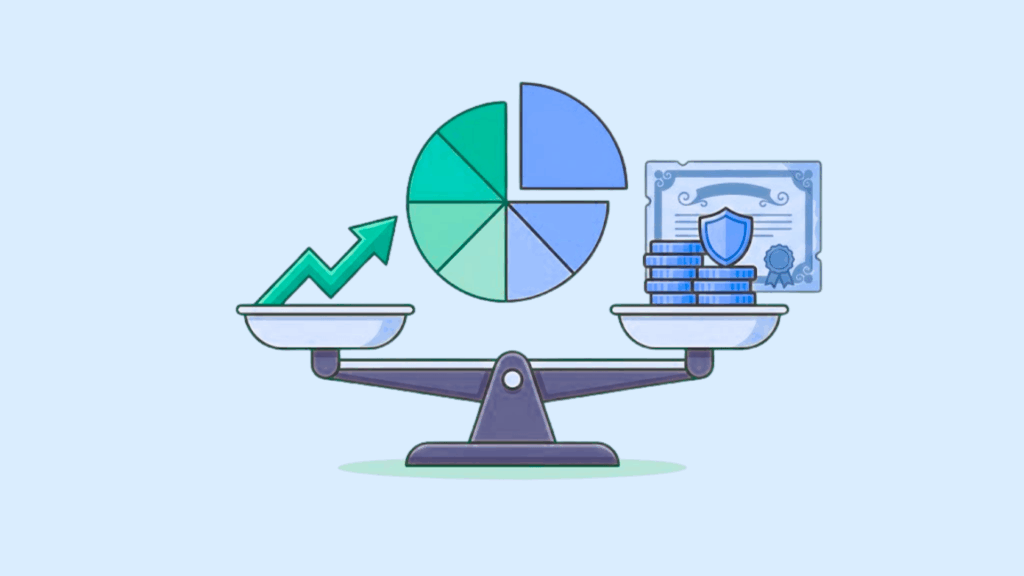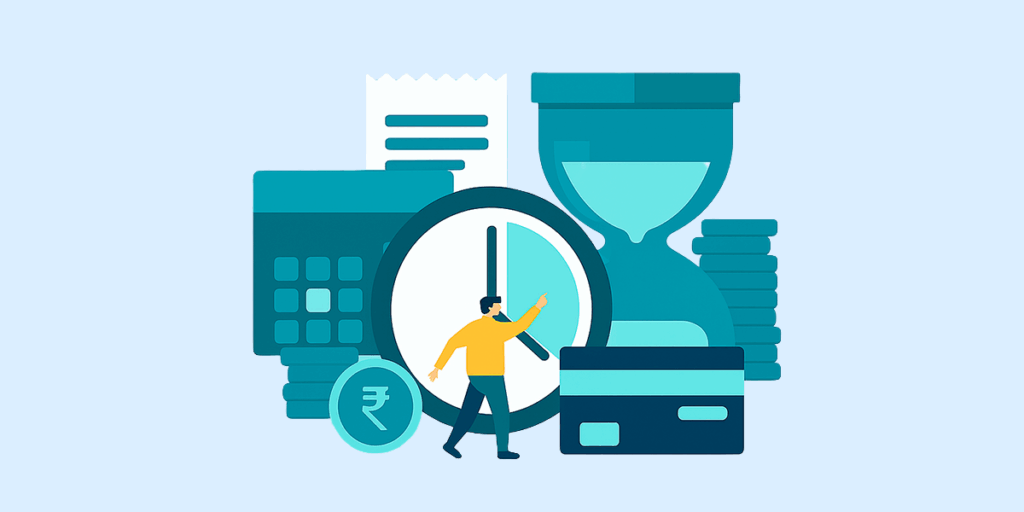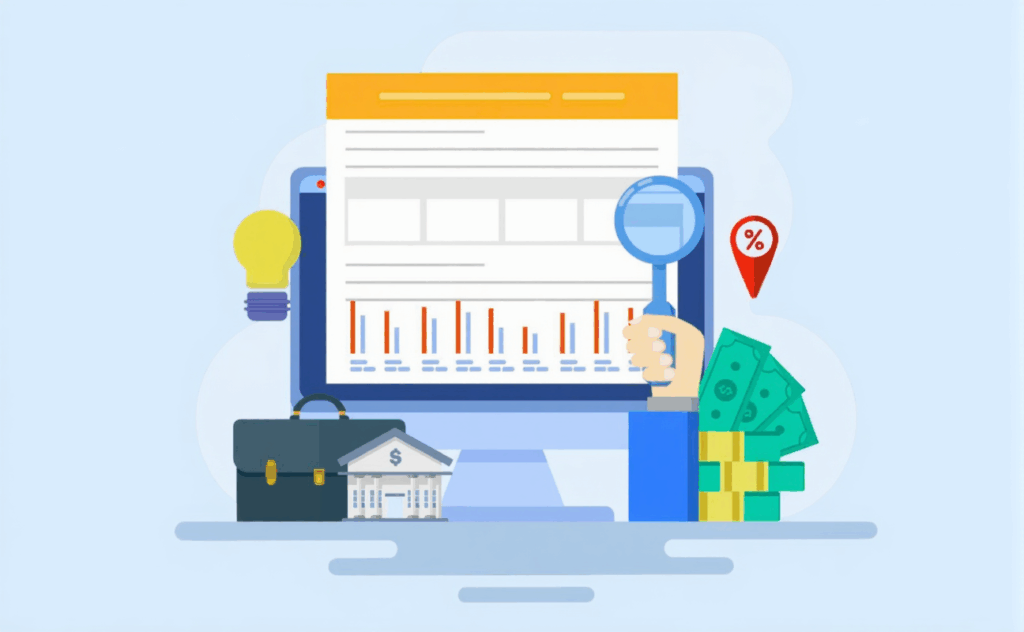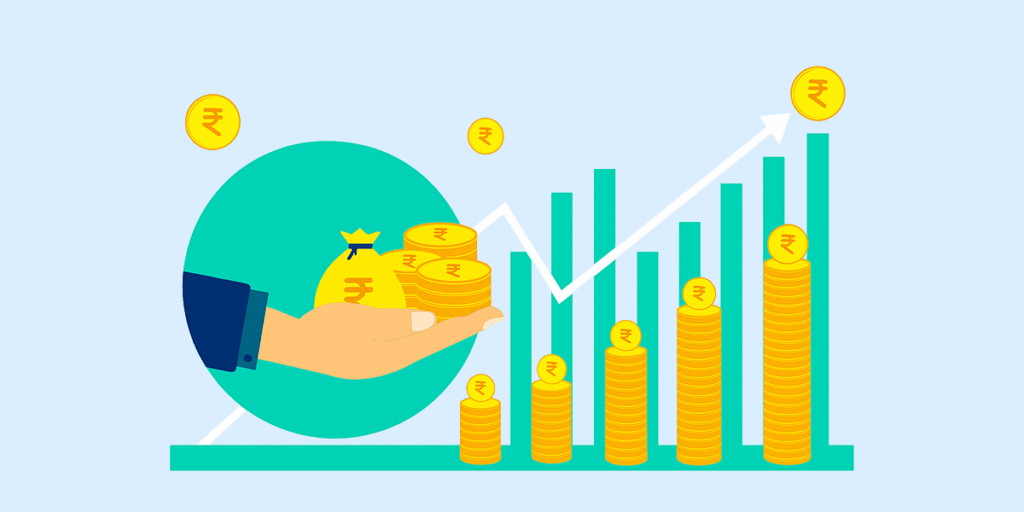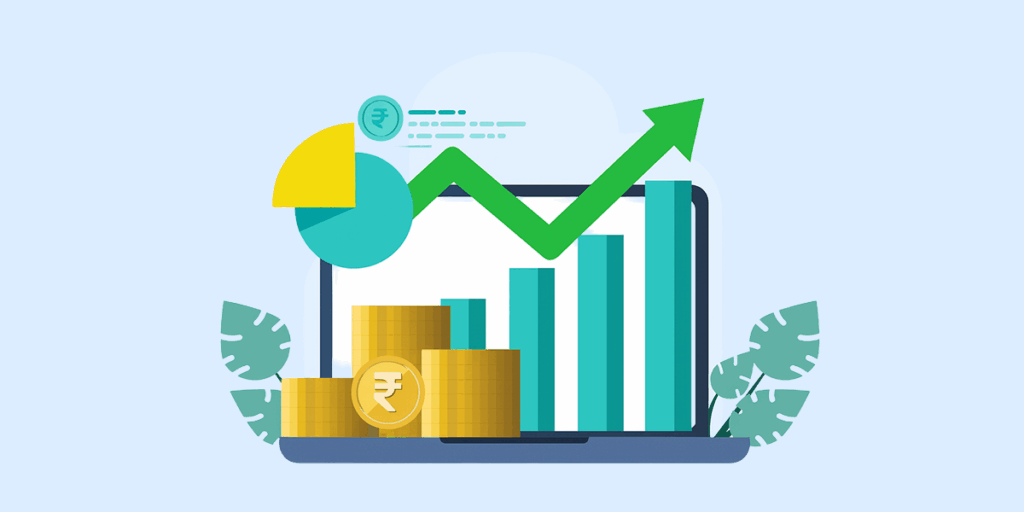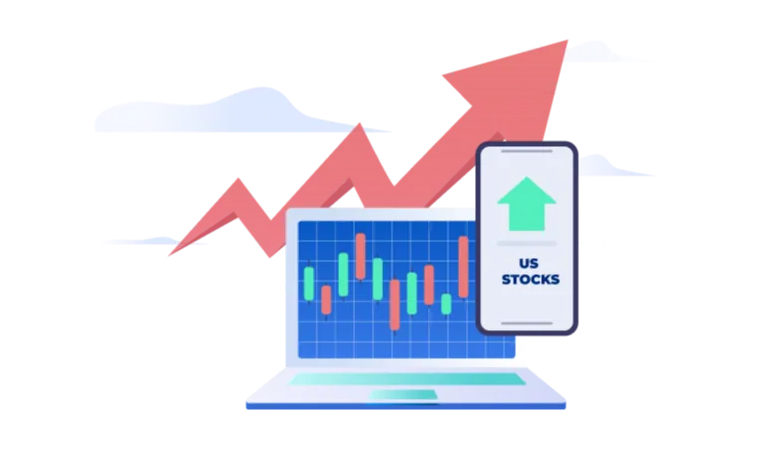Mutual funds offer a low-cost, easy way to diversify your investments. They pool money from various investors to invest in stocks, bonds, and other assets, making them attractive to beginners and experienced investors.
However, choosing the right mutual fund requires more than looking at past returns. You must consider your investment goals, risk appetite, expense ratio, and the fund manager’s track record. Continue reading as we explore these in a little more detail.
Understanding Mutual Funds
Mutual fund managers collect money from many investors and put it in a diversified portfolio. They offer professional management, diversification (spreading investments across various assets), and liquidity (easy buying and selling).
Each mutual fund has a Net Asset Value (NAV) that represents the per-unit rate. The NAV fluctuates daily according to the market value of the securities in the fund.
Types of Mutual Funds in India
Mutual funds in India can be categorised according to investment type, risk level, and structure. Here are the key types:
- Equity Funds: Invest primarily in stocks. They have higher growth potential but also come with higher risk.
- Debt Funds: Invest in fixed-income securities (e.g., government bonds and corporate debt) and are less risky than equity funds.
- Hybrid Funds: Puts money in both equity and debt to balance risk and returns.
- ELSS (Equity Linked Savings Scheme): A tax-saving fund that invests in equity and comes with a three-year lock-in period.
- Index Funds: Monitors a particular stock market index (e.g., Nifty 50) and aims to replicate its performance.
- Liquid Funds: Invest in short-term debt instruments. These are ideal for parking surplus cash with quick access to funds.
Importance of Investing in Mutual Funds
Investing in mutual funds provides you access to a professionally managed, diversified portfolio with the flexibility to start with small amounts. Here’s why mutual funds matter:
- Diversification: Your money is spread across multiple securities, which reduces the impact of a single investment’s poor performance.
- Professional Management: Experienced fund managers handle investments, making decisions based on research and market trends.
- Affordability: You can start investing with as low as ₹500 through a SIP (Systematic Investment Plan), making it accessible for everyone.
- Liquidity: Most mutual funds let you withdraw anytime, except for funds with lock-in periods like ELSS.
- Tax Benefits: ELSS funds offer tax deductions under Section 80C of the Income Tax (I-T) Act, helping you save on taxes.
Key Factors to Consider When Choosing a Mutual Fund
Selecting the right mutual fund requires more than just looking at past returns. You must consider factors like investment goals, risk level, performance consistency, and costs. A well-chosen mutual fund aligns with your financial needs and helps you build wealth over time.
Some factors that you should consider when choosing a mutual fund are:
Investment Goals
Your investment goal determines the type of mutual fund that suits you best. Common goals include:
- Wealth creation: Equity funds are a good option for long-term capital growth. They invest in stocks and have the potential for higher returns over time.
- Stable income: If you prefer regular income with lower risk, debt funds invest in bonds and government securities, offering steady but moderate returns.
- Tax savings: ELSS (Equity Linked Savings Scheme) funds provide tax benefits under Section 80C of the I-T Act and have a mandatory three-year lock-in period.
- Short-term savings: Liquid and short-duration debt funds are ideal if you need access to money within a few months to a year.
Risk Appetite and Fund Categories
Your risk tolerance is an important factor when choosing a mutual fund. Here’s how:
- High risk: Equity funds are suitable if you can handle market ups and downs and invest longer (5+ years).
- Moderate risk: Hybrid funds, which invest in both equity and debt, offer a balance between risk and stability.
- Low risk: Debt and liquid funds work well if you prefer safer investments with steady returns.
Always compare funds within the same risk category. For example, large-cap equity funds are generally less volatile than mid-cap or small-cap funds.
Fund Performance & Returns
Looking at past performance alone is not enough. You should check:
- Consistency of returns: See how the fund has performed over 3, 5, and 10 years. Avoid funds with extreme fluctuations.
- Comparison with benchmark: Every fund has a benchmark index (e.g., Nifty 50 or Sensex). A good fund should consistently outperform its benchmark.
- Risk-adjusted returns: Metrics like the Sharpe Ratio (which measures return compared to risk) help you understand if the fund’s returns justify the risks taken.
Highest Return vs. Long-Term Stability
A fund with the highest return may not always be the best choice. High returns often come with high risk, and a fund that performed well in the past may not repeat the same results. Instead of focusing only on recent top performers, look for funds with a track record of delivering stable returns across different market cycles.
- If you have a long-term investment plan, focus on consistency rather than chasing short-term high returns.
- If you invest for a short period, avoid high-risk funds, as they may face sudden market drops.
Expense Ratio and Fees
The expense ratio is the annual fee charged by the fund for management and other costs. A high expense ratio reduces returns, so you should look for funds with a low expense ratio and good performance.
- Equity funds generally have an expense ratio between 0.5% to 2.5%.
- Debt funds usually have a lower expense ratio, around 0.2% to 1.5%.
- Index funds have lower costs (0.1% to 1%) because they track an index instead of actively managing it.
Fund Manager’s Track Record and Experience
The fund manager plays a key role in a mutual fund’s performance. A skilled manager makes decisions based on research and market trends. Before investing, check:
- Years of experience: A manager with a strong track record is more reliable.
- Past fund performance: If the same manager successfully handles other funds, it adds credibility.
- Investment strategy: Understanding how the manager selects stocks or bonds can give you insights into potential risks and returns.
Top Return Mutual Funds in India
Here’s a look at some of the top return mutual funds in India based on their annual returns:
| Fund Name | Category | AUM (₹ Crs) | Current Value (₹ Lakh) | Return (p.a) | Expense Ratio |
| ICICI Prudential Infrastructure Fund | Sectoral-Infrastructure | 6,886 | 13.6 | 33.56% | 1.16% |
| Quant Small Cap Fund | Small Cap | 22,832 | 13.55 | 33.39% | 0.68% |
| Motilal Oswal Midcap Fund | Mid Cap | 23,704 | 13.29 | 32.55% | 0.68% |
| SBI PSU Fund | Thematic-PSU | 4,149 | 13.15 | 32.12% | 0.96% |
| Bandhan Infrastructure Fund | Sectoral-Infrastructure | 1,400 | 12.83 | 31.07% | 0.87% |
| Franklin Build India Fund | Sectoral-Infrastructure | 2,406 | 12.72 | 30.71% | 0.98% |
| Nippon India Power & Infra Fund | Sectoral-Infrastructure | 6,125 | 12.61 | 30.33% | 1.03% |
| DSP India T.I.G.E.R. Fund | Sectoral-Infrastructure | 4,465 | 12.54 | 30.11% | 0.82% |
| Invesco India PSU Equity Fund | Thematic-PSU | 1,047 | 12.49 | 29.91% | 0.94% |
| Canara Robeco Infrastructure Fund | Sectoral-Infrastructure | 726 | 12.46 | 29.84% | 1.11% |
Steps to Invest in the Best Mutual Funds
Investing in mutual funds requires careful planning. You must select the right mode of investment, use the right tools, and keep track of your portfolio to make informed decisions. Some ways to do this are:
1. Choose SIP and Lump Sum Investment
Your investment method depends on your financial situation and market conditions:
- SIP (Systematic Investment Plan): You invest a fixed amount at regular intervals (monthly or quarterly). This helps you avoid market timing risks and benefits from rupee cost averaging (buying more units when prices are low and fewer when rates are high). SIP is ideal if you want disciplined investing with lower risk.
- Lump Sum Investment works well if the market is at a low point and you want to take advantage of future growth. It is best suited for investors with a higher risk appetite and extra funds.
If you’re new to investing, SIP is usually a better option as it reduces market timing risk.
2. Use Mutual Fund Screening Tools
Selecting the right mutual fund requires detailed analysis. Mutual fund screening tools help you compare funds based on the following:
- Fund category: Choose between equity, debt, or hybrid funds based on your risk appetite and goals.
- Past performance: Look at 3-year, 5-year, and 10-year returns to check consistency.
- Expense ratio: Lower expense ratios mean higher returns in the long run.
- Fund manager’s track record: A fund managed by an experienced professional is usually more stable.
- Portfolio allocation: Review where the fund invests (sectors, companies, and asset classes) to assess risk and diversification.
Using these tools helps you pick funds that align with your investment strategy.
3. Monitor and Rebalance Your Portfolio
Investing in mutual funds is not a one-time process. You need to track performance and rebalance your portfolio periodically.
- Review your funds every 6-12 months: Check if they are performing as expected compared to their benchmark.
- Rebalance based on market conditions: If equity markets have risen significantly, you may need to shift some funds to debt to reduce risk.
- Exit underperforming funds: If a fund consistently lags behind similar funds or changes its investment strategy, consider switching to a better alternative.
- Adjust based on life goals: As you approach your financial goal, gradually move from high-risk equity funds to stable debt funds.
Common Mistakes to Avoid While Selecting Mutual Funds
Choosing the right mutual fund requires research and planning. Many investors make mistakes that can affect their returns and long-term financial goals. These include:
Chasing Only Past Performance
A mutual fund that performed well in the past may not always do so in the future. Many investors pick funds solely based on high past returns, ignoring other critical factors like market conditions, fund manager strategy, and risk level.
- Instead of only looking at past performance, check consistency over different market cycles (3-year, 5-year, and 10-year returns).
- Compare the fund’s returns with its benchmark index (e.g., Nifty 50, Sensex). A good fund should perform better than its benchmark over time.
- Analyse risk-adjusted returns using the Sharpe Ratio (measures return per unit of risk). A higher Sharpe Ratio shows better risk-adjusted performance.
Ignoring Risk Factors and Asset Allocation
Every mutual fund carries some level of risk. If you ignore this, you might end up with a fund that does not match your financial needs.
- Equity funds are high-risk but offer higher returns over the long term. They are suitable for long-term goals (5+ years).
- Debt funds carry lower risk and provide stable returns. They work well for short-term goals.
- Hybrid funds put money in equity and debt, balancing risk and stability.
You should also check the fund’s asset allocation (distribution of investments across different asset types). A well-diversified fund spreads investments across various sectors and asset classes to reduce risk.
Not Reviewing Your Portfolio Regularly
Many investors invest and forget, leading to missed opportunities or unnecessary risks. This is because putting money in mutual funds is not a one-time process. Instead:
- Check your portfolio every 6 to 12 months: Assess if your funds are performing as expected.
- Rebalance if needed: If your asset allocation has changed due to market fluctuations, adjust your investments to maintain the right blend of equity and debt.
- Exit underperforming funds: If a fund consistently performs poorly compared to similar funds or its benchmark, consider switching to a better alternative.
- Adjust based on life changes: As you approach your financial goal, shift from high-risk equity funds to stable debt funds to protect your returns.
The Bottom Line
Investing in mutual funds can be a great investment strategy, but they are not the only way to build a diversified portfolio. So, it’s important to compare mutual funds with alternatives like Exchange-Traded Funds (ETFs) and direct stock investments to find what suits your financial goals and risk appetite.
Download the app now!
Frequently Asked Questions (FAQs)
What factors should I consider when selecting the best mutual fund in India?
When selecting the best mutual fund in India, consider factors such as investment objective, risk appetite, past performance, expense ratio, fund manager expertise, and asset allocation. Also, check the fund’s historical returns, consistency, and category ranking.
How can I identify the top-return mutual funds for investment?
To identify the top return mutual funds for investment, compare funds based on historical performance, risk-adjusted returns, category benchmarks, and consistency over different market cycles. Reviewing ratings from AMFI, CRISIL, and Morningstar can also help.
Is it better to invest in mutual funds through SIP or lump sum?
Investing in mutual funds through SIP is better if you want rupee cost averaging, disciplined investing, and reduced market timing risks. A lump sum is preferable if you have a large investment amount and favourable market conditions.
How do I evaluate the performance of a mutual fund before investing?
To understand and review a mutualfund’s performanced before investing, analyse returns over different time periods, risk ratios (Sharpe, Sortino), fund manager track record, and consistency in beating the benchmark. Checking AUM, portfolio composition, and expense ratio also helps.
What are the common mistakes to avoid when choosing a mutual fund?
Common mistakes to avoid when choosing a mutual fund include focusing only on past returns, ignoring expense ratios, investing without a goal, chasing short-term trends, and neglecting risk factors. Always compare funds within the same category.
Disclaimer: Investments in securities markets are subject to market risks. Read all the related documents carefully before investing. The securities quoted are exemplary and are not recommendatory.




